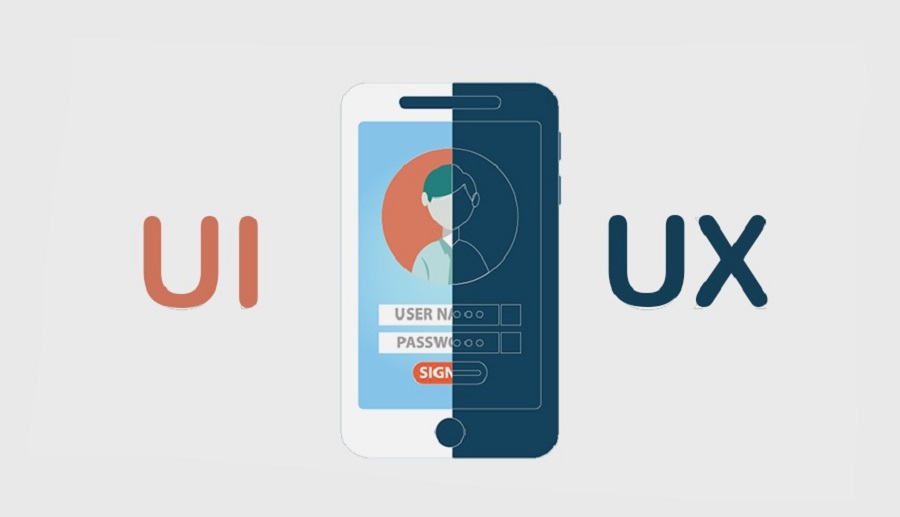The term UX/UI Design is very much prevalent in the digital era, but most people get confused between these terms.
In today’s topic, we will discuss various aspects of both of these terms and will try to overcome all the confusion surrounding their meanings. Let us have a look:
What is UX/UI Design?
UX/UI design stands for User Experience/User Interface Design. UX/UI design is concerned with the creation of a digital interface that is easy to understand, easy to use, and looks good to the eyes. Both designs are used together to give users the best experience of the website in terms of use and in terms of looks.
The Origin of UX/UI Design:
Nowadays, UX/UI design has become an important part of the digital field. A wide range of tools and techniques are used by designers for creating engaging and effective user experiences. But this term is not new. It roots way back to the 1990s.
The term UX design was coined by Don Norman who was a psychologist and usability consultant. He had the experience of working with the giants like Apple, HP, etc. When he invented this term, the looks of the website were given preference over than user’s experience of the website’s functionality. But with the invention of UX design, the design and the user-friendliness of the website both started to get equivalent importance. And now UX/UI designs both are used in conjunction with each other.
UX Design vs UI Design:
In short, UI design is concerned with how things look where as UX design is concerned with how things work. Let us take an example of a home. The UX designer of the home will be the person who takes care of the construction, whereas the UI designer will be the interior designer who will take care of the visual details of the house.
The differences between these two have been explained below:
| Difference No. | UX Design | UI Design |
| 1 | The main focus is functionality and ease of use of the website | The main focus is the looks of the website |
| 2 | Prototypes are created only in black and white | Prototypes are created in a colorful mode |
| 3 | Determines information architecture | Selects typography and color combinations |
| 3 | Use wireframe-based prototyping tools | Use image-designing tools |
| 4 | Concerned with putting social component in the design | Concerned with putting artistic components in the design |
| 5 | Focuses on the experience of the user when he/she uses the elements like buttons, textboxes, etc. for interaction with the website | Focuses on the looks and placement of the elements like buttons, text boxes, etc. |
| 6 | Designers prepare a high-level view of the product and make sure that the user flow of the product is fully complete and consistent | Designers work on individual pages, buttons, and interactions and ensure that they are well-polished and functional |
Importance of UX/UI Design:
UI/UX design is crucial for the success of the website or web application because it directly impacts the user’s experience and satisfaction with the product. It is important because of the following points:
- The website has easy navigation
- The website becomes easy to use and understand
- Users have a positive experience with the website
- User engagement and satisfaction are increased
- Makes a positive impact on the profits of the business
- Helps in staying ahead in the competition
- Gives greater potential for lead generation
- Brand credibility is increased
- Business reputation is improved
- Development costs are reduced
- Higher customer retention rates
- Adaptability to changes in user requirements and trends
Stages of UX/UI Design Process:
The UX/UI design process is a structured approach that is used to create a website and web applications that are user-friendly, efficient, and appealing.
The entire process consists of several stages and each stage needs to be taken care of so that a successful website can be developed. The following stages are involved in UX/UI design process:
Research and Analysis:
This stage is concerned with gathering information about the target audience, their requirements, and their market needs. For the research, various surveys, interviews, analyses, etc. are done. The information gathered in the research is analyzed and a detailed and consolidated list of requirements is prepared.
Various maps are prepared during this stage. These are:
Empathy maps: They are used to understand the thought process of users, finding out what they think, feel, say, and do. By gaining a deeper understanding of the user’s mindset and needs, designers can create products that are according to users’ expectations.
Journey maps: User journey maps are visual representations of the entire user flow on the website, starting from the first to the final customer interaction.
Experience maps: Experience maps can be made for each stage of the journey and help you visualize the experience at each output in more detail.
Strategy for the product:
After the research and analysis are done, the next step is to prepare the strategy on the basis of the requirements gathered. The UX/UI designer will develop a strategy for the product. The designer will set the goals, define the vision of the product, and create a roadmap for the rest of the process. The designer will also have to determine the features and functionalities the product is going to have.
Wireframing of the product:
At this stage, a rough model or sketch of the product is prepared which is called ‘Wireframing’ of the product. A layout of the product’s features and functionalities is prepared which does not involve anything about the design elements. It is just concerned with the navigation part.
Prototype of the product:
After the wireframe of the product is complete, the next stage comes up which is to prepare a prototype of the product. In this stage, a more detailed version of the product is prepared. The design elements, which were not figured out in the previous step, are included in the design at this stage. Fonts to be used, color combinations, graphics to be used, etc. all of these are decided in this stage.
Testing:
After the prototype of the product is complete, it is tested against the user requirements which were found out in stage 1. Also, the users can be engaged to test the prototype. Once the testing is complete, the finalized design is taken to the next stage otherwise necessary changes are done to the design.
Preparation of Visual Design of the Product:
After the prototype of the design is prepared, a final visual design of the product is prepared using the fonts, colors, graphics, images, etc. At this stage, it is ensured that the product will be appealing to the eyes.
Conclusion:
In nutshell, both UX design and UI design are extremely important for creating a successful website or web application. While the focus of UX design is on the overall user experience, the focus of UI design is on the visual and interactive aspects of the website or web application.
UX and UI designers might work on the same project, but they have different roles to play. UX designers often create wireframes and prototypes that become the basis of a website, while UI designers prepare the final products and designs that users have to use.
Together, they can do wonders and create a seamless and engaging experience for the users.
Although many organizations advertise a UI/UX role as a single position, UI and UX designers possess distinct skill sets. Their primary focus thought processes, and approaches to prototyping a product differ a lot.
A combined UI/UX role demands a constant shift between conceptualization and visualization, which can be challenging and can potentially distract from the level of attention each discipline needs.







